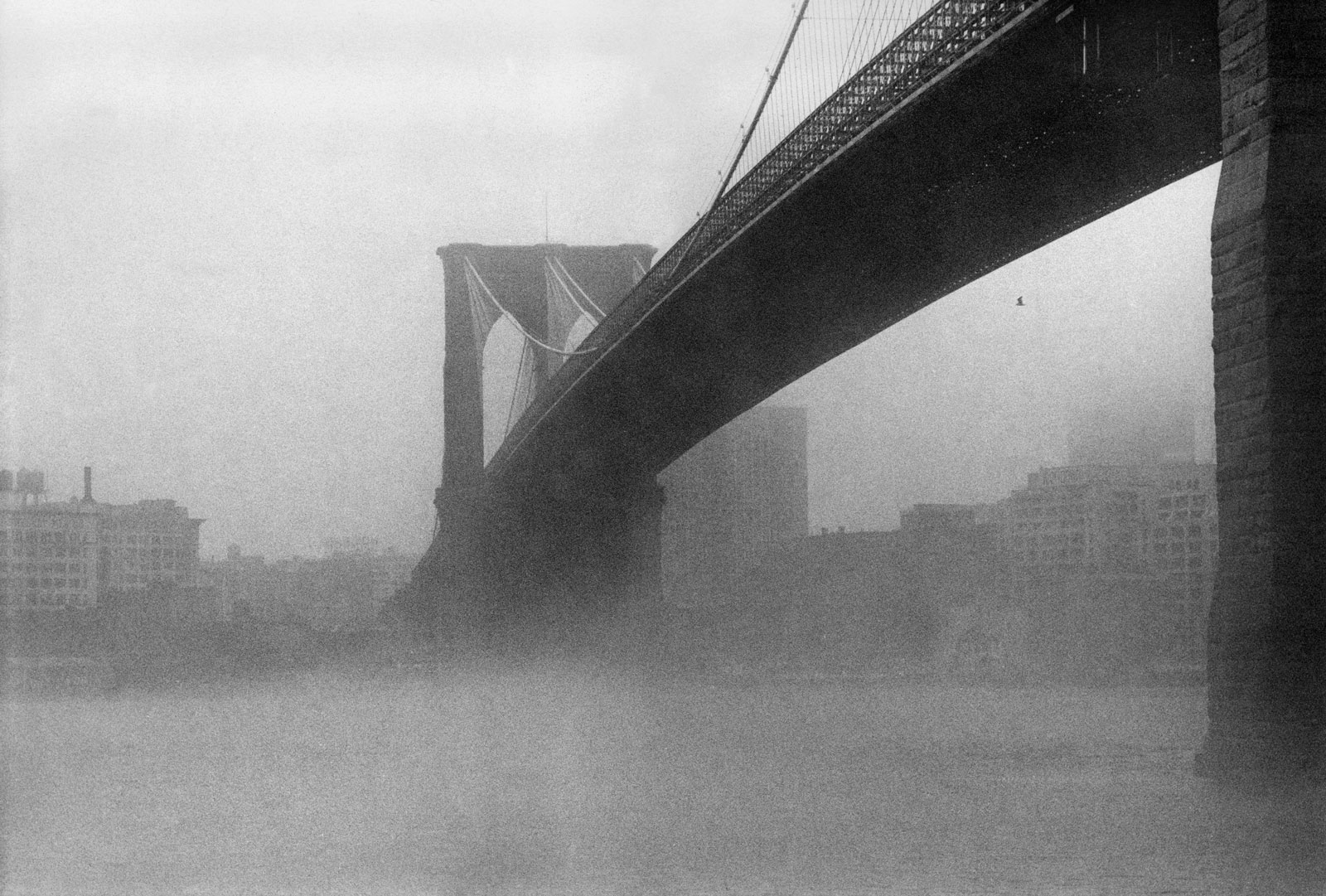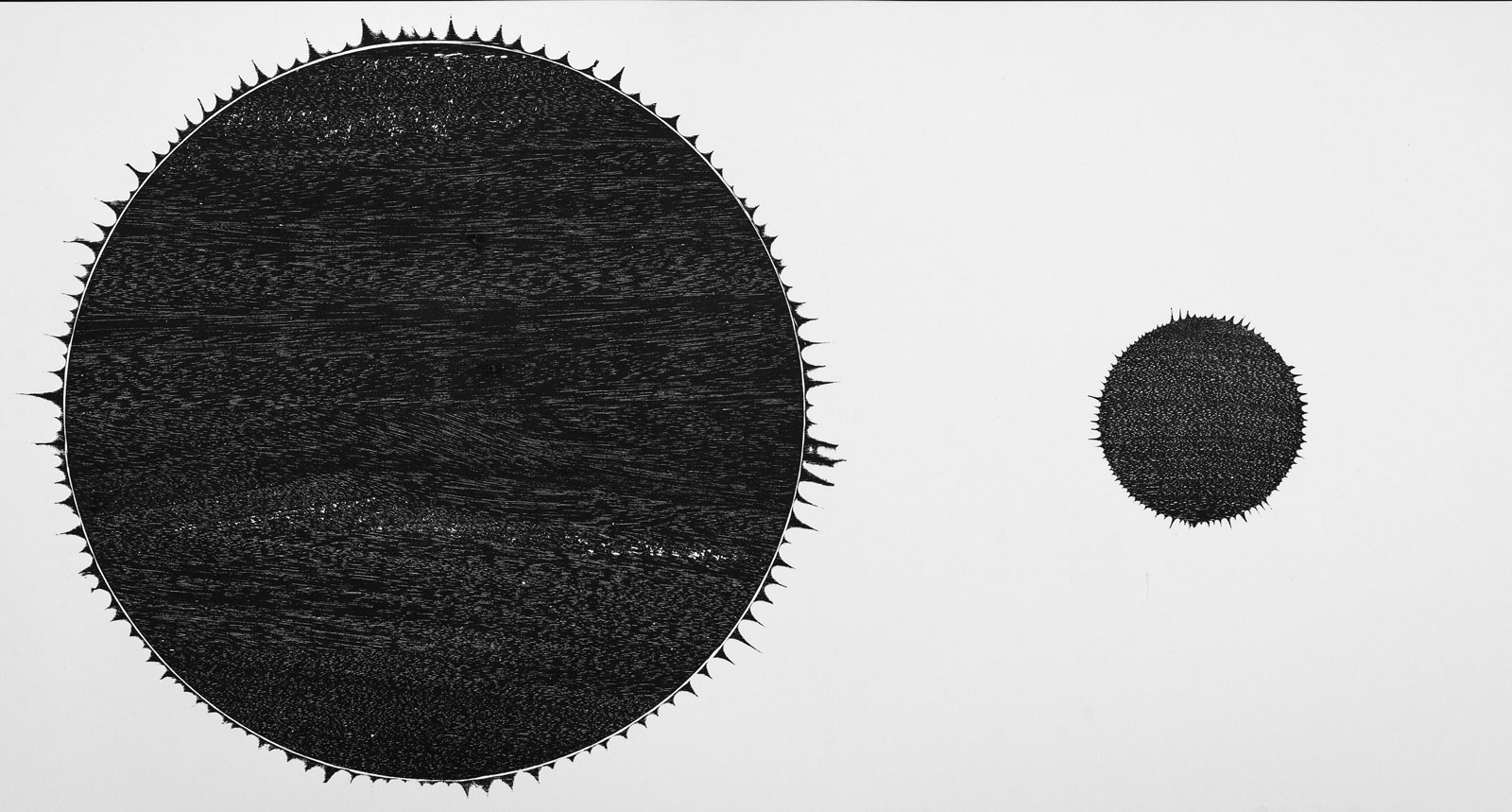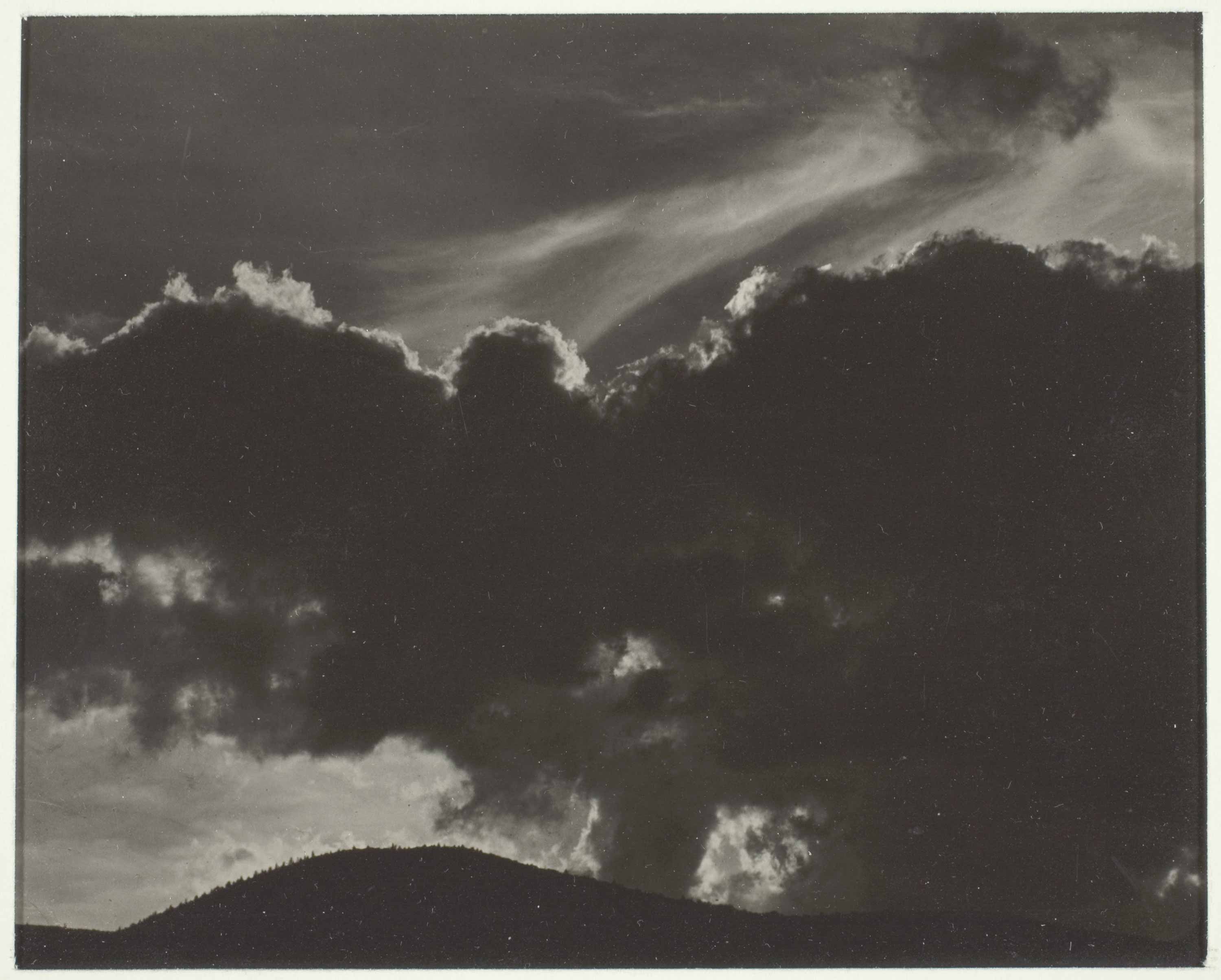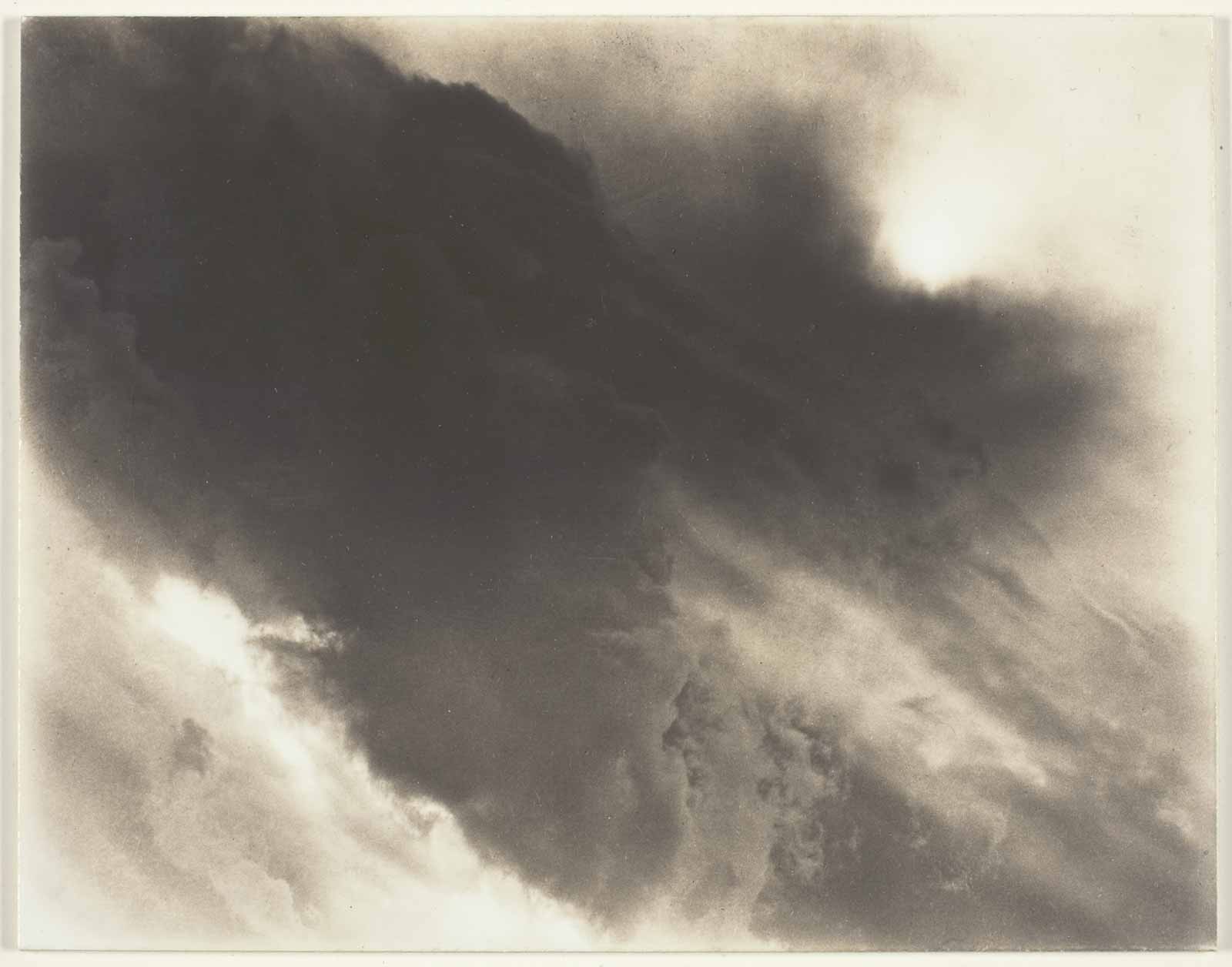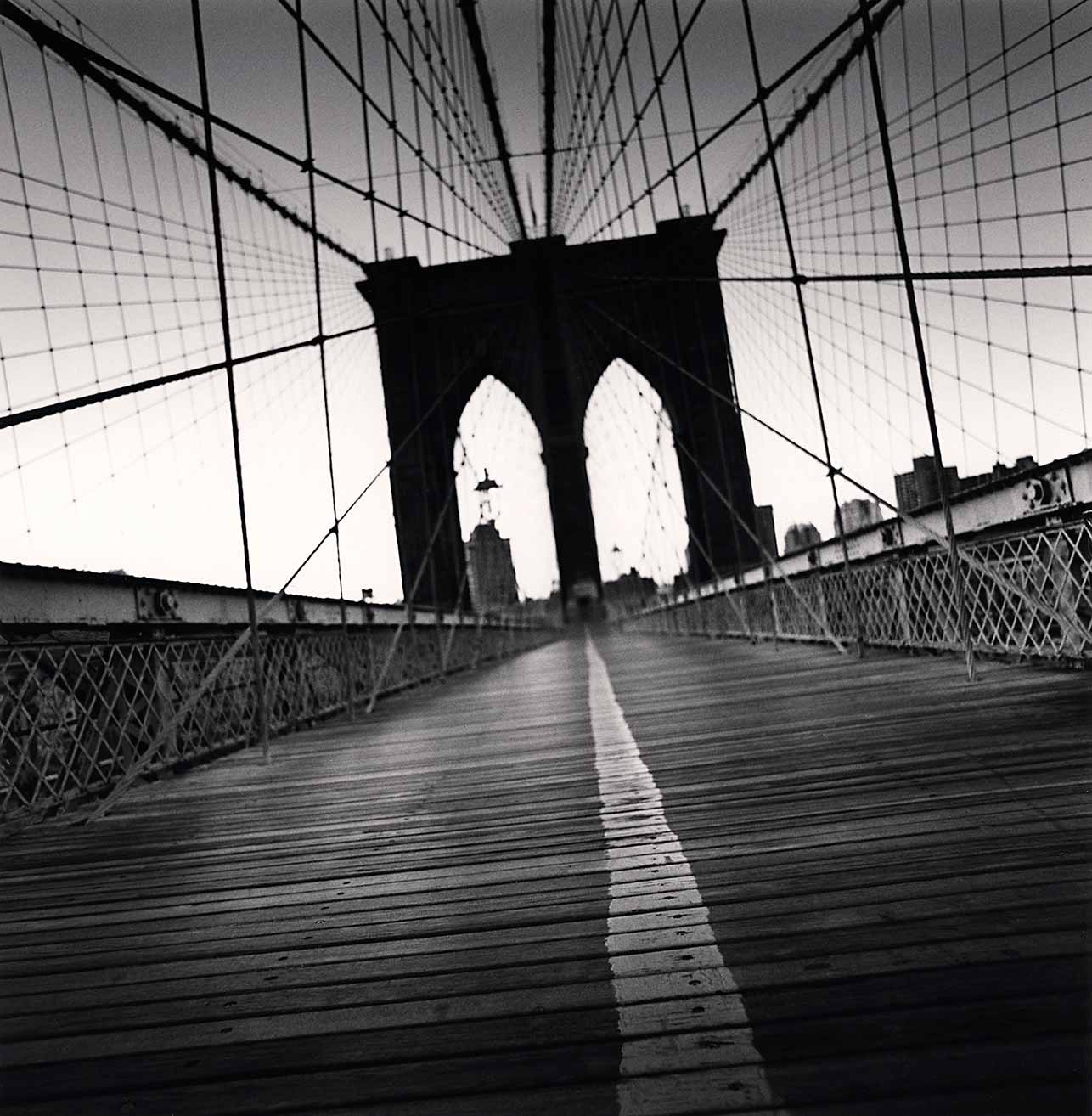Hart Crane conceived of his long poem, The Bridge, in the winter of 1923. He was twenty-three years old and working as a copywriter for a small advertising firm in Cleveland. Feverishly excited and (as was becoming usual) a little drunk, he wrote about his idea for the poem to his friend Gorham Munson:
I am too much interested in this Bridge thing lately to write letters, ads, or anything. It is just beginning to take the least outline,—and the more outline the conception of the thing takes,—the more its final difficulties appall me. All this preliminary thought has to result, of course, in some channel forms or mould into which I throw myself at white heat. Very roughly, it concerns a mystical synthesis of “America.” History and fact, location, etc., all have to be transfigured into abstract form that would almost function independently of its subject matter…but the actual statement of the thing, the marshalling of the forces, will take me months, at best; and I may have to give it up entirely before that; it may be too impossible an ambition.
It would take Crane seven years of intermittent but persistent and sometimes fierce application to achieve that “marshalling of the forces.” The Bridge was published in 1930, first in a limited edition by the Black Sun Press in Paris, then in a trade edition by Boni & Liveright in New York. Over that seven-year period, much had changed. Crane began his celebration of America’s “constructive future” when the Twenties were roaring. When The Bridge appeared, the nation was reeling from the stock market crash and about to enter the Great Depression. It was possible to feel that history had invalidated his vision before it arrived.
Reviews of the poem were generally positive, and one or two were glowing. But the ones that mattered most to Crane were by his close literary friends and former advocates, the poet-critics Allen Tate and Yvor Winters, and their assessments, published prominently, were withering. While acknowledging the poem’s extraordinary rhetorical power, they both saw it as an intellectual failure. Crane had not managed the “mystical synthesis” he hoped for; the poem was a mess, without a coherent structure of myth or belief to support its willed optimism about American culture. It proved romanticism was a dead end, Whitman was a disastrous influence, and it was impossible to write a modern epic poem, among other chastening lessons. Crane’s ambition, in their view, had turned out to be “too impossible,” just as he’d feared.
It’s not clear that the poem has ever fully escaped that judgment, if only because Crane himself seemed to submit to it. At least, that’s one inference from the fact that he wrote almost no more poetry (albeit some powerful fragments and one very great lyric, “The Broken Tower”) in the two years between the publication of The Bridge and when he jumped to his death from the stern of a passenger ship in the Gulf of Mexico in April 1932.
Crane understood his poem as inheriting and passing on the unfulfilled promises, the open prophecies, of America’s cultural past, and The Bridge itself can be counted among them. The poem survived the wreck of his career to become a message in a bottle tossed up on shore for future readers to discover and decode (an image suggested by his important short poem “At Melville’s Tomb”). In 1927, Crane bragged (with the youthful vanity that makes him winning or insufferable, depending on your point of view) that his work in progress was “already longer than The Waste Land, and it’s only half done.” The Bridge is not only longer than T.S. Eliot’s dystopian vision of the modern world, which irked and provoked Crane into poetry; it is also more complicated in its formal plan and the sheer number and range of its sources and references. What he had viewed, in 1923, as a companion poem to the five- or six-page poem “For the Marriage of Faustus and Helen” developed into a fifty-six-page multi-section work dealing with the tradition of New World prophecy, the frontier, the Civil War and World War I, folklore, hoboes, minstrelsy, burlesque, advertising, cinema, popular music, the nineteenth-century whaling industry, the deep time of Native American culture, and the geological formation of the North Carolina seacoast, among many other matters.
The challenge that The Bridge poses has less to do with its length and complexity, however, than with the immersive, participatory reading it calls for—what Crane called, in that early letter to Munson, “abstract form.” His ideas about form, abstraction, and how poetry might communicate with its readers were developed in dialogue with visual artists. The crucial word in Crane’s phrase “abstract form that would almost function independently of subject matter” is the qualifier “almost.” It wasn’t abstract art per se that Crane was invested in, but art that verges on abstraction. What he wanted to capture was a moment at which particulars become generalized, and the surface of the real opens to reveal a further dimension that is not quite independent from “History and fact, location, etc” but “almost” so. This dimension was a place of heightened intimacy where the poet and reader, artist and viewer, might meet and understand each other by means of what he called the “logic of metaphor.”
Advertisement
Harold Hart Crane was born in 1899, the only child of two Midwesterners, Clarence Arthur (“C.A.”) and Grace Hart Crane. Although he would militantly identify himself and his work with the twentieth-century America taking shape in New York City, part of his sensibility would always belong to the nineteenth century and rural Ohio. Arguably, the whole point of The Bridge was to connect these two Americas.
Or maybe the point was to reunite his warring parents? The seventeen-year-old Crane responded to his parents’ separation, in 1916, by moving to Manhattan. He claimed it would help him to prepare to enter Columbia College, but he never matriculated there or anywhere else. Rather, he gave himself an education in literature, art, and philosophy (a surprisingly rigorous one too) by reading little magazines like The Little Review and The Dial, and haunting downtown galleries, bookstores, theaters, cinemas, burlesque houses, bars, and other metropolitan settings where modernism was emerging as a new aesthetic and a way of life. In an era when leading poets like T.S. Eliot and Ezra Pound were multilingual scholars, and younger poets such as Tate and Winters made careers writing literary criticism and teaching in American colleges, Crane’s lack of certified intellectual credentials set him apart. In its at times ostentatious learning, its search for sponsors in the past, and its sheer breathless enthusiasm, The Bridge is very much the work of an autodidact, whose classroom was New York City.
Influenced by psychoanalysis, first-wave feminism, and socialism, Crane’s generation saw themselves as heralds of a new American society, more democratic, freer, and collectively dedicated to individual self-fulfillment. The ecstatic utopian elements of The Bridge represent that generational consciousness perhaps better than any other work of literature.
For Crane, that feeling was bound up with his homosexuality, of which he had been aware and notably accepting from his teenage years onward. The nascent gay culture and the bohemian art scene of New York shared many of the same values, and, at least for a time, it seemed to Crane that it might be possible to find love and community, rather than shame and exclusion, in the city. Walt Whitman, New York’s poet, was crucial to that hope. Democratic ideals, cross-class affiliations, openly celebrated same-sex desire, and a prophetic sense of literary vocation converged in Whitman, providing a template for the poet Crane hoped to become.
The Bridge is in certain ways a love poem. The raptures and desolations of same-sex desire, as Crane lived it, are subjects the poem takes up discreetly but quite explicitly. In “The Tunnel,” Crane describes love as “A burnt match skating in a urinal”—the trace of a casual pick-up in a public toilet. In the proem, he pictures himself alone on the waterfront under the Brooklyn Bridge, a location for gay cruising. Then there is the delicate aubade, “The Harbor Dawn,” in which Crane describes waking in the morning close to the East River in the arms of a lover whose sex is implied by not being indicated:
And you beside me, blessed now while sirens
Sing to us, stealthily weave us into day—
Serenely now, before day claims our eyes
Your cool arms murmurously about me lay.
It’s not such references, however, that make The Bridge a love poem. It’s Crane’s exalted, rhapsodic rhetoric, and the way that language, proper to erotic and religious themes, attaches to the image of the bridge, which was strongly associated for him with the great love of his life, Emil Opffer. Opffer was a Danish journalist and sailor with whom Crane fell deeply in love in 1924. The two men lived together briefly at 110 Columbia Heights above the Brooklyn waterfront with a view of the bridge. In a letter from that period, Crane confided in the critic Waldo Frank about his affair. Frank was not gay, which was significant: Crane felt he could speak about his love openly to him and be understood, without censure.
I have wanted to write you more than once, but it will take many letters to let you know what I mean (for myself, at least) when I say that I have seen the Word made Flesh. I mean nothing less, and I know now that there is such a thing as indestructibility. In the deepest sense, where flesh became transformed through intensity of response to counter-response, where sex was beaten out, where a purity of joy was reached that included tears.… And I have been able to give freedom and life which was acknowledged in the ecstacy of walking hand in hand across the most beautiful bridge of the world, the cables enclosing us and pulling us upward in such a dance as I have never walked and never can walk with another.
In this letter to Frank, Brooklyn Bridge is both the setting and the symbol for Crane’s communion with his lover. Their physical bond is itself a kind of bridge, a human-scale model of the great civic structure that on their walk home to Brooklyn (which must have been at night, since they were safely holding hands) encloses them and pulls them “upward,” dancing.
Crane’s way of thinking is restlessly metaphorical and analogical. It is true in such a letter and true in his poetry, above all in The Bridge. When he addresses Brooklyn Bridge in the proem to the long poem, he sees in the bridge a shape that structures American history:
O Sleepless as the river under thee,
Vaulting the sea, the prairies’ dreaming sod,
Unto us lowliest sometime sweep, descend
And of the curveship lend a myth to God.
To Crane’s imagination, Brooklyn Bridge was a symbol pointing toward the “abstract form” of Columbus’s voyage of discovery. American history in The Bridge presents a series of New World visions, which Crane saw as vehicles and vessels (bridges in motion) connecting the past, present, and future. (The extreme compression of the language in such a quatrain, which collapses centuries of American history in a single sentence, is typical of Crane, and is another sort of bridge.) The title of Crane’s poem refers to this generalized “abstract form,” rather than specifically to Brooklyn Bridge.
Crane also describes the bridge as a “myth,” but the myth is on loan (“lend a myth to God”): he doesn’t claim it is the final statement about the transcendental force it symbolizes. Rather, the stability and timelessness he attributes to the bridge are aspects of an object always in motion (“Sleepless as the river under thee”), and that therefore requires continual renaming and reimagining. The bridge symbolizes the human capacity for making symbols that extend the horizon of consciousness and desire. It is a metaphor for the world-making power of metaphor itself (a word from the Greek which, like the Latin “transport,” means “to carry across”).
Even so, Brooklyn Bridge in particular matters, over and beyond its associations for Crane with his love affair with Opffer. In The Bridge, Crane consciously extended Whitman’s vision in his poem “Crossing Brooklyn Ferry” (1856), in a way analogous to how Brooklyn Bridge transformed and updated the ferry Whitman wrote about. Whitman’s ferry, like Crane’s bridge, is a symbolic vehicle for crossing between the past and future that evokes the collective life of New York City and the nation. At the same time, Brooklyn Bridge, which opened in 1883, was, by the 1920s, no longer a new image of the modern. That also matters: Crane went back to the past for his symbol of the future. So did the architecture of Brooklyn Bridge itself, with its splendid ogive arches derived from the Gothic cathedral.
A friend of Crane’s, Walker Evans, supplied the frontispiece and other illustrations in the Black Sun edition (and for the dust jacket and frontispiece of the Boni & Liveright edition). Evans’s photographs of Brooklyn Bridge were reproduced as daringly small plates on the big pages of the oversize book. They emphasized the lyric intimacy at the core of Crane’s work by inviting the reader to look closely at the bridge from unconventional points of view. In one photograph, taken directly underneath the bridge, Evans’s lens, pointed up, turns the horizontal structure into a thrusting vertical funnel, soaring and expanding out of the frame. In another image, with the camera pointed down this time from a position somewhere midway on the span, the bridge doesn’t appear at all, just the shipping in the river below it, as if we were seeing what only the bridge sees. By such strategies, Evans defamiliarized the icon, suppressed the contextual visual information that would have called attention to the location and everyday use of the granite and steel structure, and explored its symbolic potential as a visual image. In short, Evans’s photographs transfigured Brooklyn Bridge into abstract form that almost functions independently of subject matter.
That Evans’s work suggests such a precise visual analog to Crane’s intention in The Bridge is not surprising, because Crane’s ambition was shaped from early on by his engagement with the ideas and practice of visual artists, many of whom were close friends he met in Ohio or New York. Crane’s New York friends included the sculptor Gaston Lachaise and the Surrealist painter Peter Blume. He also knew Georgia O’Keefe, but his closer and more consequential friendship was with her husband and collaborator, the photographer Alfred Stieglitz.
Crane met Stieglitz in 1923 at the opening of Stieglitz’s solo show at the Anderson Galleries on Park Avenue. When Crane described Stieglitz’s work to him, Stieglitz “confirmed my conjectures as being the only absolutely correct statement that you had thus far heard concerning your photographs.” Crane felt reinforced not only in his critical judgment but in his aims as a poet. “That moment was a tremendous one in my life because I was able to share all the truth toward which I am working in my own medium, poetry, with another man who had manifestly taken many steps in that same direction in his work.”
In a draft of an essay he never completed, Crane explains that Stieglitz’s lens grasps a “vibrance” that is “denied the human eye at all times save in the intuition of ecstasy.” Crane goes on to compare Stieglitz to William Blake, one of Crane’s primary influences. What Blake meant to Crane is suggested in another essay called “General Aims and Theories.” There, as his poetic credo, he quotes a couplet from Blake’s poem “Auguries of Innocence”: “We are led to believe a lie / When we see with not through the eye.” For Crane, Stieglitz’s photographs demonstrated Blake’s idea. The “eerie speed of the shutter” allowed the photographer to see through, rather than merely with, the natural eye. Crane wanted his own poetry to accomplish a crossing from, or passage “through,” one reality into another, following an “orbit” or “direction of its own.” It’s a version of the leap that he saw in Stieglitz’s photography: “the hundredth of a second caught so precisely that the motion is continued from the picture infinitely: the moment made eternal.”
When he and Crane were exchanging ideas about art, Stieglitz was moving toward a new level of abstraction in his work by taking photographs of the sky. Stieglitz’s “Equivalents,” as he called them, were an experimental attempt to create a deep connection with the viewer. Stieglitz turned his camera to the sky to “show that my photographs were not due to subject matter.” He focused on clouds in order to minimize the “extraneous pictorial factors” that intervene “between those who look at the pictures and the pictures themselves,” hoping that, when reduced to the most abstract and, in that sense, essential terms, the picture would stir in the viewer feelings “equivalent” to the artist’s, and produce a shared experience of the spiritual.
The “logic of metaphor,” a key concept for Crane, appeared for the first time in his correspondence with Stieglitz, where he means by it something close to what Stieglitz meant by “Equivalents.” The “rationale of metaphor,” Crane believed, “belongs to another order of experience than science,” comparable to the dimension accessible to us when we “see through the eye.” Invoking that rationale, Crane’s poetry subordinates denotation to connotation, and gives priority over external reference to metaphorical patterns and semiotic linkages internal to the poem. Crane calls this self-reflexive use of language “a terminology something like shorthand,” a radically condensed idiom, almost a code, available to a reader whose sensibility is so constituted as to grasp the poet’s intentions.
Stieglitz’s comments on his “Equivalents” suggest a quasi-scientific belief that abstract forms, configured correctly, would necessarily produce their desired effect in viewers. He may have been influenced by T.S. Eliot, who defined the “objective correlative” as “a set of objects, a situation, a chain of events” that work as the precise “formula” for the “particular emotion” a poet feels and wishes to evoke in the reader. In Stieglitz, as in Eliot, there was a sense that the formal dimensions of the work of art might function as a “formula” capable of objectifying subjectivity.
Crane was less assured. He knew that his “logic of metaphor” was an article of faith and an inescapably subjective matter. When the editor of Poetry Magazine, Harriet Monroe, challenged him to explain the recondite imagery in “At Melville’s Tomb,” Crane mounted a defense of metaphorical thinking. He insisted that his poem, like poems by Blake and Eliot that he quoted from to illustrate his point, was not illogical; poetry simply obeyed a logic of its own, alternative to philosophical rationality and common sense. Yet, with Monroe’s objections in view, he had to allow that “plenty of people will not have accumulated a sufficient series of reflections (and these of a rather special nature)” to follow that logic.
Poetry opened up for Crane the potential to connect with his reader on a deep level. It promised a meeting of minds, a rare intimacy, of the kind he found with Stieglitz. But it was also possible—very possible—that his reader wouldn’t get what he was saying. And then where would he be?
The Arion Press edition of The Bridge continues Crane’s dialogue with modern art by including photographs by Michael Kenna and woodblock prints by Joel Shapiro. Kenna’s photographs of Brooklyn Bridge pay homage to Evans’s images of the bridge: they, too, produce in their upward-thrusting perspectives the sense of a thing starting into motion. Or is it the prolonged exposure times at dawn and dusk for which Kenna is known that create an impression of stillness and motion combined? Shapiro, a New York artist, is known for a related effect in his sculptures, many of which are large-scale public art. His semi-abstract, schematic shapes based on the human figure play with gravity, seeming to defy it, pushing their mass to the limit against its force. Though still, his forms are in motion, like dancers frozen—impossibly—just before they fly or fall.
The image of two men dancing at night on Brooklyn Bridge was one of the first Crane associated with the “myth” of the bridge, as he expressed in his letter to Waldo Frank. Think of them as figures Shapiro might have created, each a dancer who, in his “ecstasy,” has almost left the ground, and is about to fly—or fall. Those are the only options in Crane’s vertiginous poetry of ecstasy, and they were bound up with each other, in his experience and in his art. Crane’s letter to Frank, in its exhilaration and in its excited sense of rescue and relief, makes us aware of a corresponding threat, the pressure of which Crane’s joy pushes back against. The very height of his feeling, in other words, implies what it feels like to be brought low.
What would falling mean? As a homosexual, he was at particular risk of rejection by his lovers and his society. Crane told Frank that, through his love for Opffer, he had discovered “indestructibility.” But he and Opffer grew apart before very long (there is no evidence of an actual break between them, although, when he was interviewed on the subject decades later, Opffer, at that point a married man living in Denmark, denied that he and Crane had ever been more than good friends). Crane never again spoke of a lover so openly and rapturously as he had spoken of Opffer in 1924. What he felt about or did with other men, henceforth, he would keep mainly to himself. It’s hard not to feel that American society, or at least Crane’s assessment of it, had changed in a fundamental way, dashing his hope of claiming his place in it as a gay man.
We know that he suffered slights and insults (some subtle, some not so) on account of his sexual orientation and his openness about it. He was also a victim of what today we might see as hate crimes. After he made a scene at the Café Select in Paris, the police clubbed him, dragged him by his feet (one observer saw his head bounce over the curb), and threw him into a cell, where he was whipped with a rubber hose. More than once, he was attacked by sailors he had been drinking with. While carousing on the night before he died (which happened to be Opffer’s birthday), he was beaten badly by members of his ship’s crew. The next day, when he folded his coat neatly on the railing and jumped overboard, he had a black eye and bruises on his face. His last words were “I’m utterly disgraced.”
As a poet, Crane was at risk of speaking a private language—too subjective, too “abstract,” to be understood. That danger too was very real. There is something mad after all about addressing Brooklyn Bridge, and addressing it with the archaic intimate “Thou,” as Crane does in the proem to The Bridge. Imagine coming upon a young man at night on the Brooklyn waterfront exclaiming in full voice:
O harp and altar, of the fury fused,
(How could mere toil align thy choiring strings!)
Terrific threshold of the prophet’s pledge,
Prayer of pariah, and the lover’s cry,—Again the traffic lights that skim thy swift
Unfractioned idiom, immaculate sigh of stars,
Beading thy path—condense eternity:
And we have seen night lifted in thine arms.
The author of The Bridge is a prophet, a pariah, and a lover. He is also the manic “Bedlamite” glimpsed in the proem, who “speeds” to the bridge’s “parapets, / Tilting there momently, shrill shirt ballooning,” before jumping to his death. Crane places that suicide on the threshold of his poem perhaps in hopes of avoiding self-destruction by acknowledging the risk of it. The scene reminds us of the human stakes of his poetic venture, of everything that his poem was meant to redeem. It reminds us also that failure and impossibility shadow the conception of his poem from the beginning, as we saw when he first mentioned The Bridge to Munson in1923.
What Crane manages to do in the course of the poem is to revalue failure, asking us to see it as the guarantor, not the opposite, of visionary success. It is the nature of the New World visions he is concerned with that the destination always lies, in the words of his Columbus, “still one shore beyond desire!” In the end, The Bridge commits itself to error because it can only reach its goal by metaphor, and metaphor is error: it is the nature of the object of desire to be misnamed, precisely because it has no single name, and it requires metaphor to be brought into view in the first place, even fitfully and far away. The mistaken quest affirms the sovereignty of the imagination by positing a goal that can be envisioned but not reached. The idea is a reply in advance to the reviews that Crane’s poem would receive from Tate and Winters.
As he worked on The Bridge, Crane referred to the challenge of describing it, half in apology and half in pride and wonder: “It is almost impossible to say what it is about without resorting to the actual metaphors of the poem.” He was right. There is no way to understand the poem by standing outside it. The reader must simply dive in and learn its language, which is difficult but not private. The ground of the poem, which it never loses touch with, is after all the real world that we share; and if the goal is to make visible another world somehow existing beyond or within this one, the idea is that we might share that, too.
Adapted from an essay published by Arion Press in its October 2017 edition of Hart Crane’s The Bridge with woodblock prints by Joel Shapiro (seven prints commissioned from the artist illustrate the scroll-format text of the poem, with three published in a separate portfolio).


